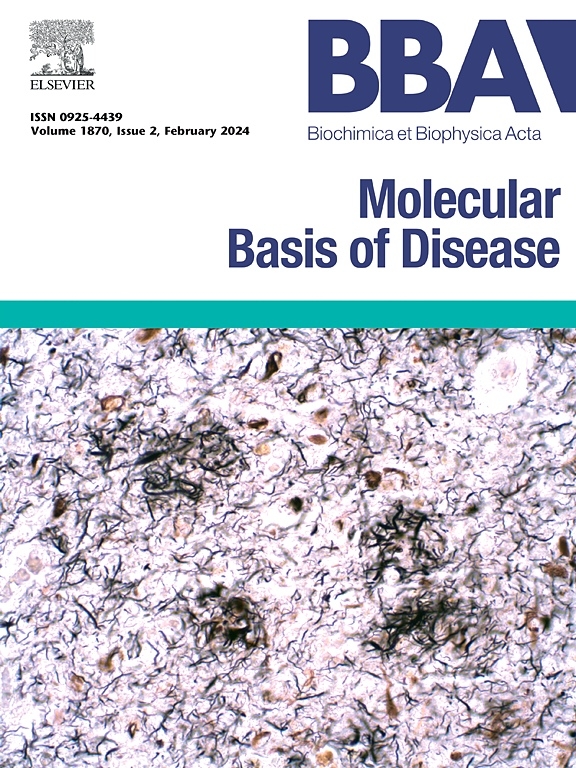血红素加氧酶2 (HO-2)在癌症中的新作用:诊断和治疗的意义。
IF 4.2
2区 生物学
Q2 BIOCHEMISTRY & MOLECULAR BIOLOGY
Biochimica et biophysica acta. Molecular basis of disease
Pub Date : 2025-09-18
DOI:10.1016/j.bbadis.2025.168057
引用次数: 0
摘要
血红素加氧酶(HOs)是调节细胞氧化还原平衡、免疫信号和铁代谢的关键酶,通过血红素降解成胆绿素、一氧化碳(CO)和亚铁(Fe2+)。HO-1是诱导型异构体,在肿瘤进展、炎症和治疗抵抗中的作用已被广泛研究,而HO-2是组成型表达异构体,历史上受到的关注有限。然而,新出现的证据表明,HO-2通过不同于HO-1的机制参与癌症的发病,包括调节肿瘤启动细胞、血管生成、氧化应激反应和免疫调节。这些发现表明,HO-2在癌症诊断和治疗中是一个尚未被充分探索但很有希望的靶点。在这篇综述中,我们总结了HO-1和HO-2的结构和功能差异,研究了HO-2在各种恶性肿瘤中的新作用,并讨论了其作为诊断生物标志物和治疗靶点的潜力。我们还强调了选择性化学工具的最新进展,这些工具可以在癌症模型中实现HO-2的可视化和功能抑制。本文章由计算机程序翻译,如有差异,请以英文原文为准。

Emerging roles of heme oxygenase 2 (HO-2) in cancer: Implications for diagnosis and therapy
Heme oxygenases (HOs) are critical enzymes that regulate cellular redox balance, immune signaling, and iron metabolism through the degradation of heme into biliverdin, carbon monoxide (CO), and ferrous iron (Fe2+). While HO-1, the inducible isoform, has been extensively studied for its roles in tumor progression, inflammation, and therapy resistance, HO-2, the constitutively expressed isoform, has historically received limited attention. However, emerging evidence suggests that HO-2 contributes to cancer pathogenesis through mechanisms distinct from HO-1, including the regulation of tumor-initiating cells, angiogenesis, oxidative stress responses, and immune modulation. These findings position HO-2 as an underexplored yet promising target for cancer diagnosis and therapy. In this review, we summarize the structural and functional differences between HO-1 and HO-2, examine the emerging roles of HO-2 in various malignancies, and discuss its potential as a diagnostic biomarker and therapeutic target. We also highlight recent advances in selective chemical tools that enable the visualization and functional inhibition of HO-2 in cancer models.
求助全文
通过发布文献求助,成功后即可免费获取论文全文。
去求助
来源期刊
CiteScore
12.30
自引率
0.00%
发文量
218
审稿时长
32 days
期刊介绍:
BBA Molecular Basis of Disease addresses the biochemistry and molecular genetics of disease processes and models of human disease. This journal covers aspects of aging, cancer, metabolic-, neurological-, and immunological-based disease. Manuscripts focused on using animal models to elucidate biochemical and mechanistic insight in each of these conditions, are particularly encouraged. Manuscripts should emphasize the underlying mechanisms of disease pathways and provide novel contributions to the understanding and/or treatment of these disorders. Highly descriptive and method development submissions may be declined without full review. The submission of uninvited reviews to BBA - Molecular Basis of Disease is strongly discouraged, and any such uninvited review should be accompanied by a coverletter outlining the compelling reasons why the review should be considered.

 求助内容:
求助内容: 应助结果提醒方式:
应助结果提醒方式:


